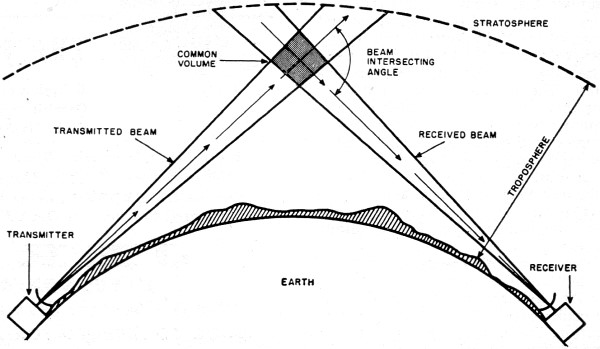Scatter System to Link NATO Nations |
||
Scatter System to Link NATO Nations One of the most modern and extensive military radio communications systems in the world will combine over-horizon forward scatter and line-of-sight links.Supreme Headquarters Allied Powers Europe recently issued a letter of intent for the engineering and installation of one of the most modern and extensive military communications systems in the world. This new network will combine over-the-horizon tropospheric forward scatter and line-of-sight radio relay links to further integrate, from a communications viewpoint, certain international and national military agencies and installations. These extend from Eastern Turkey around the broad crescent throughout NATO Europe to the far reaches of Northern Norway. The companies involved are International Standard Electric Corp., the overseas management subsidiary of International Telephone and Telegraph Corp. and Hycon Eastern, Inc., Cambridge, Mass. The combined estimated contract cost is $9 million. The main center of this gigantic undertaking will be established in Paris. Planning, engineering, and general supervision will, in the larger part, be conducted from there. In addition, there will be field teams for testing, exploration, installation, and supervision which will be deployed in the many NATO European countries where the forward scatter and radio relay station sites are projected. The system design will employ the most modern techniques known. Consideration is given to very high circuit reliability and to physical and electronic security in order to provide the greatest dependability.
Diagram showing the path geometry of a tropospheric forward scatter circuit. In scatter propagation, there is a very large amount of radio energy thrown out into space in the hope that some of the energy will get scattered around by dust, raindrops, and normal discontinuities in the layers of air around the earth's surface. The small amount of energy which does get bounced back in the right direction is then detected, using specially designed, very sensitive radio receivers. In the scatter process, much energy is lost, since the radio waves are indeed scattered in every direction. But the percentage of energy which does get back to earth contains all the information necessary to communicate reliably. Ordinary radar waves and other very high frequency radiations travel through space in straight lines. But as the accompanying illustration shows, two straight lines, properly oriented, can make an angle around a curved surface. It is in this manner that for-ward scatter propagation "bends" around the earth's surface and covers much greater distances than in conven-tional line-of-sight transmission. In the entire operation there will be wide employment of technical personnel from the NATO countries, and the procurement to the maximum extent of equipment on an international competitive bidding basis. The project will be both complex and challenging. Posted |
||

